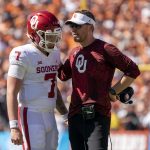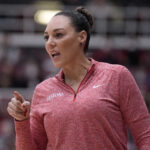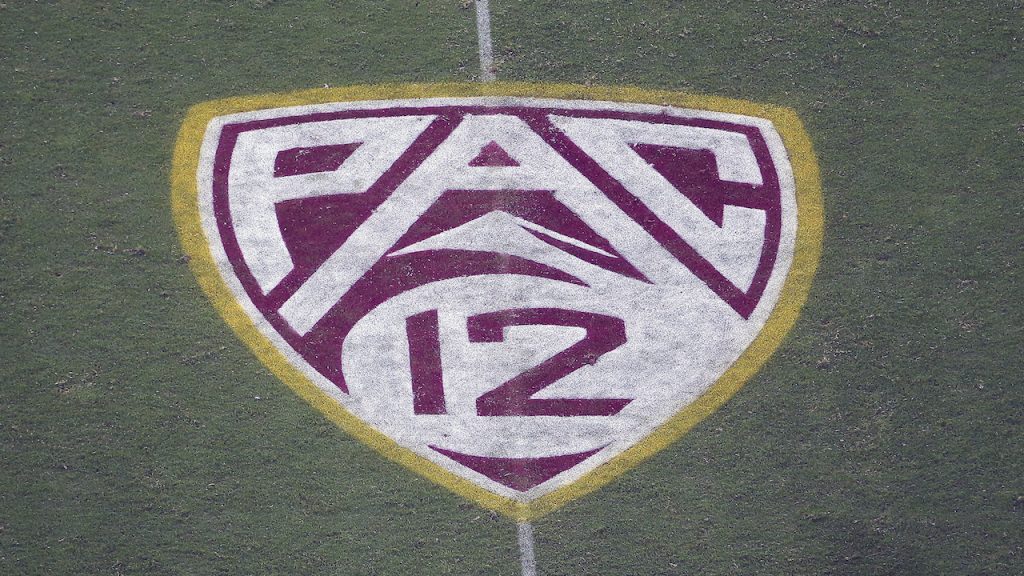The Hotline mailbag is published each Friday. Send questions to pac12hotline@bayareanewsgroup.com or hit me on Twitter: @WilnerHotline. Due to volume — and in some cases, the need for research — not all questions will be answered the week of submission. Thanks for your understanding.
Some questions have been edited for clarity and brevity.
Why does all the interesting football stuff happen in the SEC? — @moneylineman1
Two words: community imperative.
Football is so deeply imbedded in the culture and psyche of the South that it fosters — no, it requires — a whatever-it-takes ethos on the campuses.
That’s reflected in the schools’ approach to hiring coaches, building facilities, marketing the teams and, of course recruiting.
The rabid interest fuels the ticket sales, donations and TV ratings that generate massive revenue streams and allow SEC schools to reinvest in football in their relentless pursuit of success to satisfy their rabid fans.
It makes perfect sense that we would see an unprecedented public spat between coaches, Alabama’s Nick Saban and Texas A&M’s Jimbo Fisher, given the unprecedented nature of something as critical as recruiting in the era of name, image and likeness.
The SEC stands as both incubator and manifestation of the community passion throughout its footprint.
It doesn’t push the sport’s envelope. It is the envelope.
As ghastly as the mudslinging from Tuscaloosa and College Station might seem given the topic (recruiting ethics) — and as much anxiety as it might cause commissioner Greg Sankey — it makes for great theatre for fans and will only serve to make the Alabama-Texas A&M game must-see television.
In the long run, the Saban-Fisher feud is another piece of kindling for the hypnotic SEC football inferno that grips tens of millions of fans each Saturday.
Contrast that with the staid nature of the Pac-12, where the community imperative is modest and the number of must-see events limited.
The conference desperately needs a team that’s loved by some, despised by many and A-level entertainment for all.
It had exactly that in the 2000s, when USC dominated under Pete Carroll. And from the looks of it, the Trojans are on the fast track to replicating their superhero, uber-villain existence.
They’re loaded with star power and have managed to infuriate fans across the country with their transfer portal victories — first quarterback Caleb Williams, now receiver Jordan Addison.
With a smile on his face and fingers forming the ‘Fight On’ symbol, coach Lincoln Riley is becoming the coach everyone loves to hate, the antagonist the Pac-12 needs.
At this point, there is no obvious adversary, and Riley must win big before securing ownership of the spotlight.
But given his recruiting success over a mere six months, that end-game is easy to envision.
And the Pac-12 would be better for it.
Team Jimbo or Team Saban? — @Jumpdad2321
Now and always, the Hotline is on Team Common Sense.
What happens if conference networks get into NIL deals? — @twohandmath
Fortunately, that cannot happen.
The conference networks are owned by or affiliated with the schools. NIL ventures are reserved for the private sector.
In some states, athletic department employees can facilitate NIL deals between athletes and potential employers. But the money cannot come from the university or conference machinery.
What Pac-12 championship game would have had different participants if the new rule had been in effect? — @RockDawg3
We covered this in our news report, but it’s well worth repeating — after all, the data you’re about to read was at the heart of the decision to change the format …
Had the new process been in place since the inception of the Pac-12 championship game in 2011, the matchup would have been different on five of 11 occasions:
2011: No. 9 Oregon vs. No. 4 Stanford (instead of unranked UCLA)
2012: No. 8 Stanford vs. No. 5 Oregon (instead of No. 16 UCLA)
2015: No. 7 Stanford vs. No. 16 Oregon (instead of No. 20 USC)
2018: No. 11 Washington vs. No. 13 WSU (instead of No. 17 Utah)
2020: No. 13 USC vs. No. 25 Colorado (instead of unranked Washington)
That’s compelling stuff.
And as we noted Thursday, the early forecasts for ’22 suggest ideal timing.
It’s not difficult to envision the two best teams in the conference residing in the same division: Utah and USC.
Changing the format for the championship game appears to be a popular decision. But is it really necessary to follow that up with eliminating the divisions and changing the scheduling format? Scheduling and divisions were never a problem before. — @TerryTerry79
Now that the North and South winners aren’t locked into the championship game, the divisions are nothing more than a visual. You look at the standings and see two groupings of six teams.
In our view, a schedule model weighted to division opponents only works if the divisions carry competitive significance.
If overall conference record is the determining factor, the schedule should feature the widest sweep of opponents possible.
Everyone will have to miss two teams each year — the issue is which two. But that can only be solved after you determine the permanent opponents.
Can we expect a pod schedule to come to the Pac-12 next year? I do like the four-square model you proposed yesterday. Hope that is what we get. — @TheRealeJMoney
For those who missed it, the Hotline suggested the Pac-12 adopt a pod system as the backbone for the future conference schedule.
Pod A: The Northwest schools
Pod B: The California schools
Pod C: The Mountain/Desert schools
Each team would play the three opponents in its pod and have six rotating openings for the remaining eight teams.
The conference schedule will change now that the divisions have no competitive value, but we don’t know the specifics of the new model or the timing.
The Pac-12 could revise the master schedule in time for the 2023 season or wait for the current rotation to run its course in 2026.
USC is on course to be the lone remaining FBS school to have never played an FCS foe. But in the world of NIL and NFL, do the players and recruits really care? Does the average fan? Besides bragging rights, does it really matter? What say you? — @Boscpenn83
I say it’s about alumni pride and nothing more. There are no competitive disadvantages to playing one FCS opponent per season. It doesn’t impact the conference race, and the College Football Playoff selection committee clearly doesn’t care.
That said, alumni pride cannot be taken lightly. In fact, few matters are more important for an athletic department.
With UCLA and Notre Dame agreeing to play FCS teams in the next two seasons (specifically, Historically Black Colleges and Universities), the Trojans will stand alone.
Our guess is that will only strengthen the alumni’s collective resolve.
Support the Hotline: Receive three months of unlimited access for just 99 cents. Yep, that’s 99 cents for 90 days, with the option to cancel anytime. Details are here, and thanks for your support.
*** Send suggestions, comments and tips (confidentiality guaranteed) to pac12hotline@bayareanewsgroup.com or call 408-920-5716
*** Follow me on Twitter: @WilnerHotline
*** Pac-12 Hotline is not endorsed or sponsored by the Pac-12 Conference, and the views expressed herein do not necessarily reflect the views of the Conference.
Related posts:
 Wilner Hotline – Thanksgiving Day Pac-12 Doings
Wilner Hotline – Thanksgiving Day Pac-12 Doings

Oklahoma head coach Lincoln Riley . (AP Photo/Jeffrey McWhorter)
Wilner Hotline – Lincoln Riley To USC Sends Shock Waves Through Pac-12
Arizona head coach Adia Barnes (AP Photo/Tony Avelar)
Metcalfe Pac-12 WBB notebook: Stanford sweeps ranked LA schools, Utah splits despite Pili injury, Arizona back in bye position
(AP Photo/Damian Dovarganes, File)
Pac-12 survival: Oregon, Washington to deliver the death blow, leave for the Big Ten; more defections expectedJon Wilner
Jon Wilner has been covering college sports for decades and is an AP top-25 football and basketball voter as well as a Heisman Trophy voter. He was named Beat Writer of the Year in 2013 by the Football Writers Association of America for his coverage of the Pac-12, won first place for feature writing in 2016 in the Associated Press Sports Editors writing contest and is a five-time APSE honoree.
